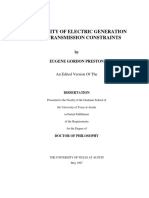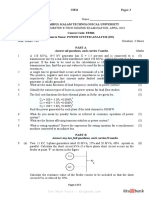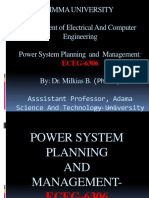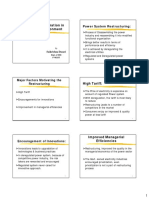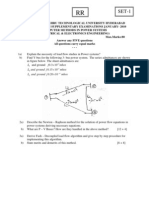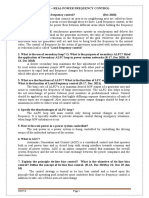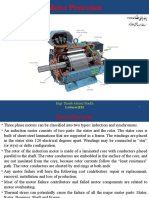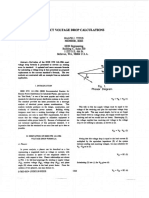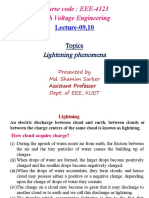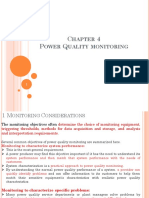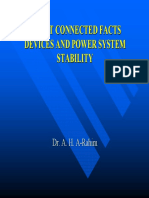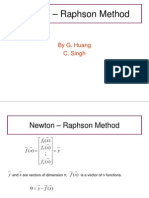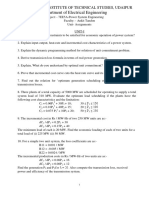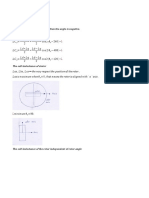0% found this document useful (0 votes)
272 views43 pagesECE 576 - Power System Dynamics and Stability: Lecture 6: Synchronous Machine Modeling
This document discusses modeling synchronous machines using the dq0 reference frame transformation. It presents the fundamental laws and equations for modeling the stator, rotor, and shaft of a synchronous machine. It also derives the torque equation by analyzing the energy balance and power conversion between the electrical and mechanical systems of the synchronous machine.
Uploaded by
Kauã AntunezCopyright
© © All Rights Reserved
We take content rights seriously. If you suspect this is your content, claim it here.
Available Formats
Download as PPTX, PDF, TXT or read online on Scribd
0% found this document useful (0 votes)
272 views43 pagesECE 576 - Power System Dynamics and Stability: Lecture 6: Synchronous Machine Modeling
This document discusses modeling synchronous machines using the dq0 reference frame transformation. It presents the fundamental laws and equations for modeling the stator, rotor, and shaft of a synchronous machine. It also derives the torque equation by analyzing the energy balance and power conversion between the electrical and mechanical systems of the synchronous machine.
Uploaded by
Kauã AntunezCopyright
© © All Rights Reserved
We take content rights seriously. If you suspect this is your content, claim it here.
Available Formats
Download as PPTX, PDF, TXT or read online on Scribd
/ 43


